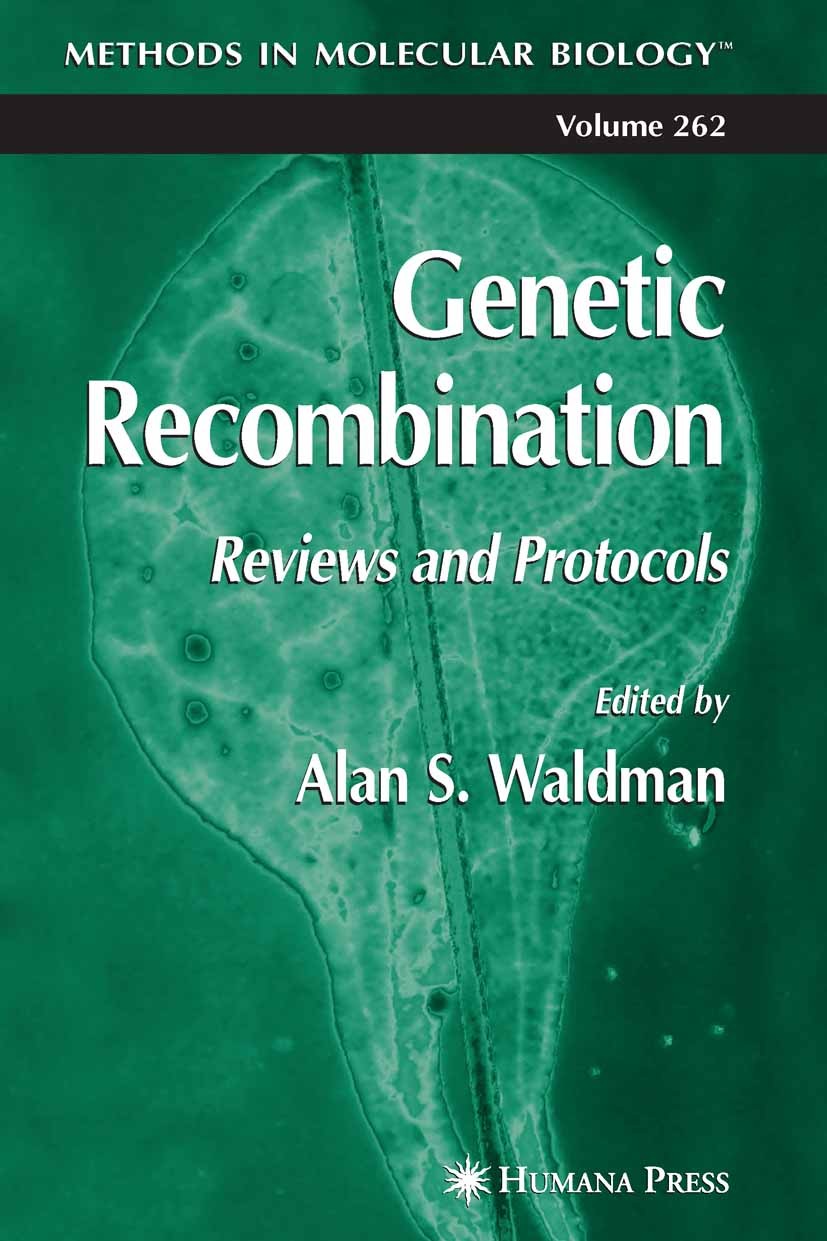| 书目名称 | Genetic Recombination | | 副标题 | Reviews and Protocol | | 编辑 | Alan S. Waldman | | 视频video | http://file.papertrans.cn/383/382619/382619.mp4 | | 概述 | Includes supplementary material: | | 丛书名称 | Methods in Molecular Biology | | 图书封面 |  | | 描述 | Genetic recombination, in the broadest sense, can be defined as any process in which DNA sequences interact and undergo a transfer of information, producing new “recombinant” sequences that contain information from each of the original molecules. All organisms have the ability to carry out recombination, and this striking universality speaks to the essential role recombination plays in a variety of biological processes fundamentally important to the maintenance of life. Such processes include DNA repair, regulation of gene expression, disease etiology, meiotic chromosome segregation, and evolution. One important aspect of recombination is that it typically occurs only between sequences that display a high degree of sequence identity. The stringent requirement for homology helps to ensure that, under normal circumstances, a cell is protected from deleterious rearrangements since a swap of genetic information between two nearly identical sequences is not expected to dramatically alter a genome. Recombination between dissimilar sequences, which does happen on occasion, may have such harmful consequences as chromosomal translocations, deletions, or inversions. For many organisms, it is | | 出版日期 | Book 2004 | | 版次 | 1 | | doi | https://doi.org/10.1385/1592597610 | | isbn_softcover | 978-1-61737-442-5 | | isbn_ebook | 978-1-59259-761-1Series ISSN 1064-3745 Series E-ISSN 1940-6029 | | issn_series | 1064-3745 | | copyright | Humana Press 2004 |
The information of publication is updating

|
|
 |Archiver|手机版|小黑屋|
派博传思国际
( 京公网安备110108008328)
GMT+8, 2025-11-22 15:26
|Archiver|手机版|小黑屋|
派博传思国际
( 京公网安备110108008328)
GMT+8, 2025-11-22 15:26


